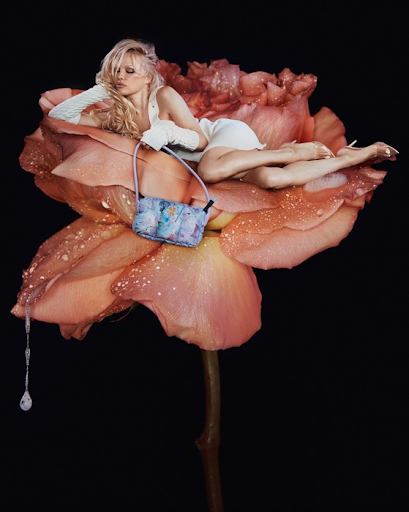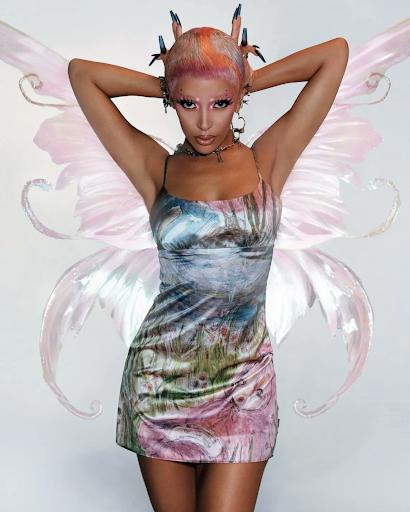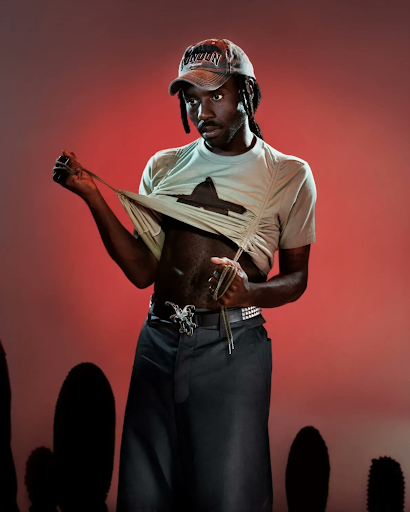A masterclass in Gen-Z marketing, Heaven by Marc Jacobs explained
One designer brand has lured so many Gen Z customers that it’s putting every other marketing team to shame. Kate Bowie asks what they’re doing so right, and if it’s really clothing that they’re selling.

Every fashion-forward child of the TikTok age has one brand on their lips and in their wish lists: Marc Jacobs. More specifically, Heaven by Marc Jacobs – ‘a gateway into the sprawling and enigmatic omniverse of Marc Jacobs subversion’. To put it more clearly than Jacobs, Heaven is a collection aimed at teens. And by god have they aimed with precision. While the grungy Y2K glamour of the collection’s clothing is not to be ignored, it doesn’t take a genius to tell you that’s not all they’re selling.
Heaven’s instantaneous popularity is outrageous in of itself, but especially so within the context of Marc Jacobs history. In just 2018, the New York Times claimed Jacobs had fallen ‘out of fashion’ and ‘no longer understood what customers want’. After spending a few years conducting what can only have been the most intensive customer feedback ever produced, Jacobs smugly returned with Heaven.
Birthed in 2020 with the help of collaborator Ava Nirui (aka Instagram fashion artiste @avanope), the collection is a violently exciting entanglement of 00’s rave, 90’s grunge and 2022’s maximalism. A ‘f*ck you’ to all who doubted him, Heaven is an emboldened reimagining of the 1993 spring/summer grunge collection that got Marc Jacobs fired from Perry Ellis. The clothing itself is the wet dream of anyone who lusted over UNIF’s colourful sweaters five years ago. Tongue-in-cheek baby tees and architectural mini-skirts have become staples of Heaven’s collections, and many items look like they’ve been given to an enthusiastic toddler with a glue gun and unlimited embellishments.

While undoubtedly cool, however, it must be said that these clothes aren’t anything particularly new. Similar grunge pieces have been clogging up Depop and padding out issues of Fruits magazine for years. No, what’s new is the marketing behind the collection. Since its inception, Heaven has relied on a handful of carefully curated and intimidatingly cool celebrity endorsement and involvement. So far, they’ve nabbed the likes of Wynona Ryder, Charlie XCX, Doja Cat and Twin Peaks’ star, Kyle MacLauchlan.
These aren’t just your regular celebrity photoshoots, mind you. Artists like Eri Wakiyama and film director Wong Kar-Wai are behind the scenes making them irresistible. Pamela Anderson’s shoot features her curled up playboy-like in a dewy pink rose, dangling a bag by her pinkie figure. Kyle MacLachlan is transformed into an emo angel of death, looking up beneath a layer of black eyeliner, while sporting a knitted jumper. The shoots play into the respective aesthetics of TikTok teens, matching the styles of fans to the celebrities they stan. In short, Heaven is hitting Gen Z where it hurts so good – the niche subcultures and artists they identify themselves with.

Co-creator Ava Nirui is far from denying that Heaven is a collection about culture, not clothing. ‘The youth are super culturally aware and very advanced when it comes to style […] Because of the trend cycle, Gen Z happens to be very interested in a lot of the aesthetic, music, culture, films and art that is at the core of the Marc Jacobs brand’. It’s not just the collection’s photo shoots that back her claims; the online site itself sells memorabilia and ephemera ranging from Blair Witch Project flyers to tatted-up teddy bears.
As one TikTok commenter said, ‘I believe owning anything from heaven is more about having a form of social currency than style’. While that might be metaphorically true for any designer brand, Heaven’s pieces literally equate social currency. They embody being in-the-know, working as stylized merch for the underground artists and niche celebrities. And if there’s one thing we know about Gen Z by now, they can’t resist the niche.
Words by Kate Bowie




















